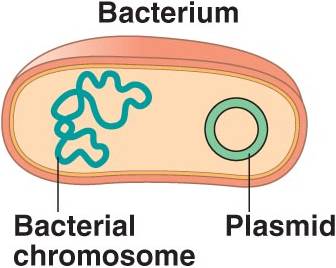



Researchers at the University of Oxford report that plasmids are one of the key culprits in spreading the major global health threat of antibiotic resistance. Using an Escherichia coli experimental model, the international team of researchers showed that plasmids, which live inside bacteria and are known to be a vehicle for transferring antibiotic resistance genes, can accelerate the evolution of new forms of resistance, making them more important to the process than previously thought.

The study (“Multicopy Pasmids Potentiate the Evolution of Antibiotic Resistance in Bacteria”) is published in Nature Ecology and Evolution.
Senior author Craig MacLean, Ph.D., a Wellcome Trust Research Fellow in Oxford’s department of zoology, said that “The discovery of antibiotics revolutionized medicine by making it much simpler to treat bacterial infections, and this had a big impact on human health and longevity. For example, the use of penicillin led to a 90% decrease in mortality caused by some forms of pneumonia. Unfortunately, few new antibiotics have been discovered over the last 30 years, and resistance to existing antibiotics has spread steadily because antibiotics are used heavily in medicine. This is leading to a crisis in medicine, as we have lost the ability to treat bacterial infections that can have life-threatening consequences.”
A report from the O’Neill Commission predicts that antibiotic resistance will lead to 10 million deaths per year by 2050, surpassing cancer as a source of human mortality.
According to Dr. MacLean, the spread of resistance genes in bacterial populations is driven by simple, Darwinian selection. During antibiotic treatment, bacteria with resistance genes have a higher reproductive rate than sensitive bacteria, and, as a result, the use of antibiotics causes the spread of resistance genes.
“Many of the most important resistance genes are found on plasmids, which are small, circular DNA molecules that live inside bacteria,” he said. “Plasmids are capable of moving between bacteria and are usually thought of as being important ‘vehicles’ that transfer resistance genes between bacteria. Our paper demonstrates that plasmids can also act as evolutionary catalysts that accelerate the evolution of new forms of resistance. This occurs because bacteria usually carry more than one copy of a plasmid, which allows resistance genes carried by plasmids to rapidly evolve new functions—in this case, the ability to degrade an antibiotic. Additionally, plasmids automatically amplify the number of copies of these new and improved resistance genes.”
He pointed out that the team’s findings demonstrate a new role for plasmids in antibiotic resistance and evolutionary innovation, and they highlight the threat posed by plasmids to public health.
“The conventional view of plasmids is that they act as important vehicles that transfer resistance genes between bacteria,” said Dr. MacLean. “Our research shows a new role for plasmids in antibiotic resistance by demonstrating that plasmids drive the evolution of novel forms of antibiotic resistance. While this does not offer any solutions per se, it further highlights the importance of developing new methods for tackling plasmids. For example, it may be possible to develop new drugs that will block plasmid replication.”